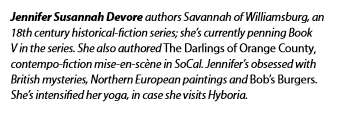
Ladies Who Slay: 50 Years of Women and Conan in Comics
Before artists Frank Frazetta and Boris Vallejo populated the Hyborian Age with bewitching, Barbarian bodies, Conan-creator Robert E. Howard penned tales vibrant enough to conceive unequaled worlds of sensual sword-and-sorcery. Decades after The Phoenix on the Sword publication ("Weird Tales", December 1932), Howard's Barbarian still savages a path through pop-culture, pulp-fiction and, since 1970, comics.

"Her hair was like elfin-gold … Her full red lips smiled and from her slender feet to the blinding crown of her billowy hair, her ivory body was as perfect as the dream of a god. Conan's pulse hammered in his temples."
Robert Ervin Howard (REH) was born a Texan, and died a Texan. In between, he traveled not only the vast Lone Star landscape, but the American South and Southwest. Occasional trips took him across the Mexican border, visiting Boys Town and sending picturesque postcards from destinations like Piedras Negra. Born in 1906, Howard's childhood was Western-nomadic, hauled from oil-boom towns to land-boom towns and back again by his manically-entrepreneurial father, Dr. Isaac Mordecai, and Robert's perpetually-ailing mother, Hester Jane.
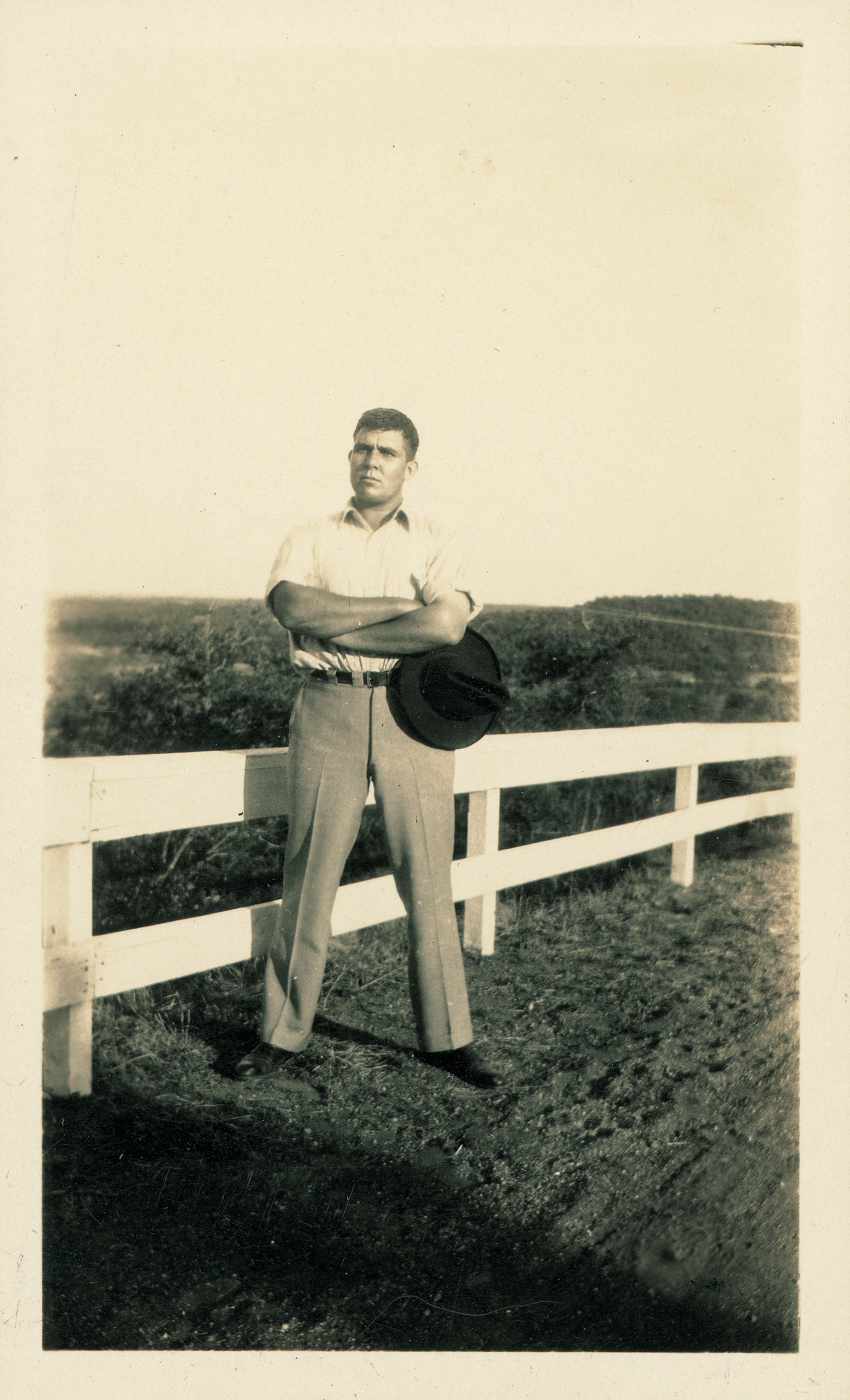
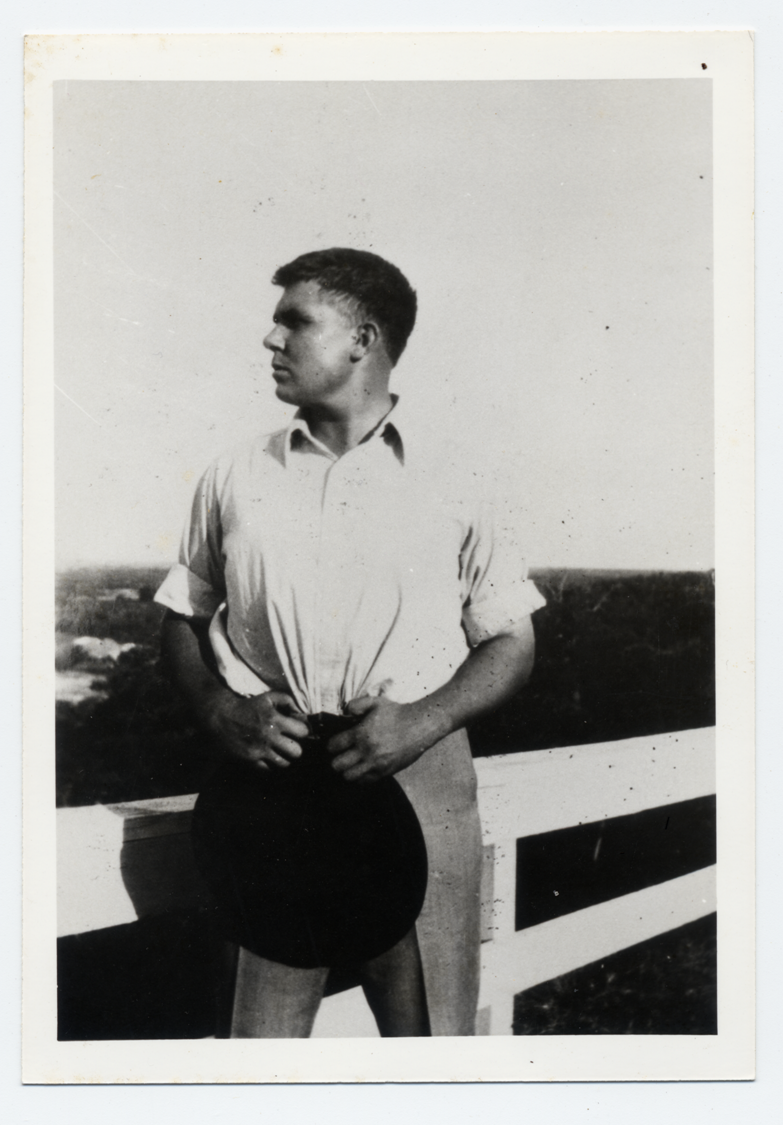
“I’ll say one thing about an oil boom: it will teach a kid that life’s a pretty rotten thing … ”
“I hated school … what I hated was the confinement, the clock-like regularity … most of all the idea that someone considered himself or herself in authority over me …”
Howard polished his art, devouring raconteurs like Twain, Poe and Lovecraft. A zeal for history, his grandmother's tales and the family cook's ghost stories, Howard developed early an appetite for sagas and the supernatural. Writing before the age of ten, Howard was first published at fifteen, via school newspapers and local rags. At eighteen, came his first professional sale: Spear and Fang ("Weird Tales", July 1925).
Life's trudge and burdensome fears of old age pummeled Howard. June 11th, 1936, day-three of his mother's coma, proved enough. That morning, Howard exited his mother's bedroom and went to his own. There, he typed a poem.
So lift me on the pyre.
The feast is over
And the lamps expire.”
He then left the house, where his father kept vigil over Hester, walked a few short steps and climbed into his car: a 1935 Chevy he'd purchased for himself, with cash, from the rather good monies he'd earned writing. There, near the house, in the driver's seat, he shot himself in the head. He died eight hours later. Hester died the next day, having never regained consciousness. Mother and son were buried on June 14th at Greenleaf Cemetery in Brownwood, Texas, in a family plot Howard had recently purchased, "with perpetual care", on June 10th.
In a final frame of unimaginable pathos, Howard's father "paid someone to clean out the splattered brains" and drove his son's car, for years. Dr. Howard was reunited with his wife and only child on November 12, 1944.

“Life is a hard thing for a woman. Your tall supple body will grow bent like mine, and broken with childbearing; your hands will become twisted, and your mind will grow strange and grey, with the toil and the weariness … ”
What Howard left modern folklore was, not only Conan the Cimmerian, but a world of ladies who slay, literally. Pirates, witches and queens, Hyborian-age women battle as fiercely as Conan, and seduce as easily as they slay.
Decades after Howard's first Conan tale, the first Conan comic would be published, in Mexico: La Reina de la Costa Negra (1952), published by Corporacion Editorial Mexicana (CEM). Adapted from Howard's Queen of the Black Coast, the Hyborian pirate adventures ran in some fifty issues of CEM's Cuentos de Abuelito, yet presented Conan as a blond, rather than REH's raven-haired beast: an exotic switch for a Latin demo.
From the late-1950s into the mid-1960s, La Reina de la Costa Negra was published again by Ediciones Mexicanas Asocidas and, later, by Ediciones Joma giving the Mexican demographic another fifty-plus issues of Conan and his luscious pirate queen, Bêlit.
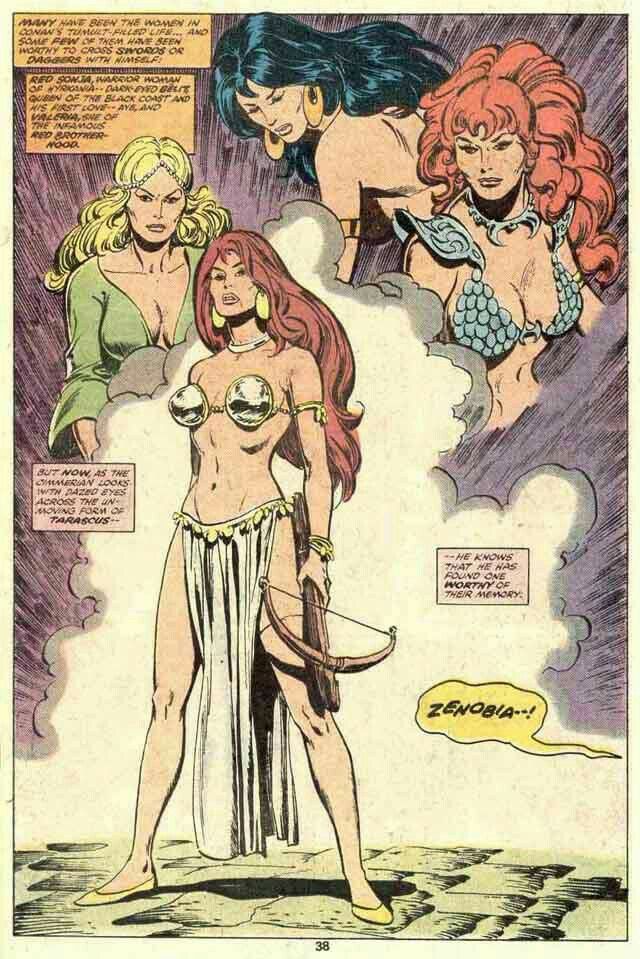
"I had purchased all the published 1960s Lancer paperback books starring Conan - mainly for their Frazetta covers …"
Thomas' Red Sonja of Hyrkania was an eager adaptation of Howard's Red Sonya of Rogatine: heroine of his 1529 Viennese historical-yarn, The Shadow of the Vulture ("The Magic Carpet Magazine", January 1934).
If 1930s Sonya echoes a perkier, apple-cheeked Jean d'Arc, 1970s Sonja is a robust, yet suburbanesque warrior. Instead of a broadsword and katana, she could easily be clenching a tennis racket and workout towel: Farrah Fawcett in battle-whites.
Feathered, strawberry-ginger waves tumble between Sonja's 1973 shoulders; she is, naturally, fair of face. Battle-ready, she sports bell-sleeve, chainmail crop-tops, bold jewelry and, oddly, red granny-panties, which complement her red knee-boots nicely. However, throughout the remaing 1970s, she quickly becomes most recognizable in her trademark, chainmail bikini, thigh-holster with a nasty looking knife, and gladiator knee-sandals. The original Ginger Spice.
Sonja's origin-story waxes classic: family slaughtered, personally violated and home torched. Next, ancient magic unleashes to save her. Afterwards, there's copious soul-searching and perfection of mad MMA skillz, followed by a lifetime of revenge and palpable loneliness.
"I will find you, nameless one, and I will repay you for what you have done to my family, and to me!"

Through the Eighties, Sonja explores her feelings and sharpens her mad skillz, earning her place as warrior in a breadth of solo and crossover media. Yet, pop-culture's most defining image must be Brigitte Nielsen. The statuesque Dane of Richard Fleischer's 1985 feature Red Sonja cements her as a Marvel icon, initiating decades of hot, ginger cosplay.
Mid-Nineties, Red Sonja: Scavenger Hunt (Marvel, December 1995) sets Sonja on a soul-quest. As a girl does, she got extra fit for said-quest, physically and mentally. Fierce swordplay, her mind-game en pointe, Sonja even lost a little weight. Thanks to illustrator Alex Jubran, she looks quite Giselle Bündchen, like she does way more Pilates than Crossfit.
"Look at me, Conan! I am Bêlit, queen of the black coast. Oh, tiger of the north … Take me and crush me with your fierce love! … I am a queen by fire and steel and slaughter - be thou my king!"
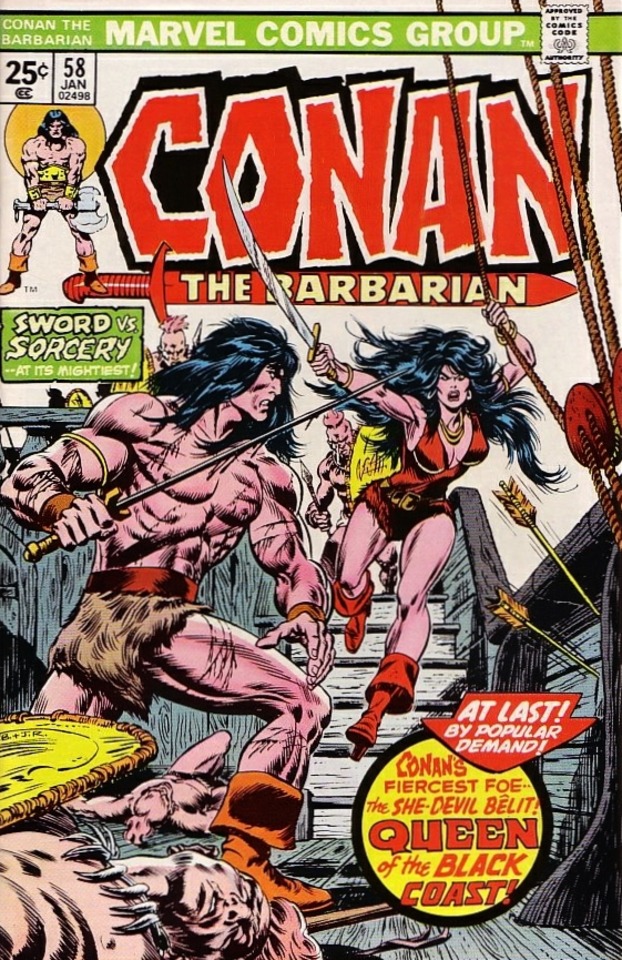
Captaining the Tigress, Bêlit is a force of hurricane-strength, commanding a corsair crew wearing naught but a corset and sandals. As Howard penned one Bêlit exploit, it fell to Marvel to hoist again the Tigress' sails.
In 1975, Roy Thomas reacquaints Bêlit and Conan in Queen of the Black Coast. Artist John Buscema revamps her from 1930s Mata Hari to 1970s hippie-chick: think Cher, Half-Breed. Earthy, with ultra-long, stick-straight, blue-black hair, Bêlit makes swimwear a clever career choice, for pirate work: bikinis or plunging one-pieces, gold accessories and bucket-top boots. No cover-ups for this confident chick. Yet, even Cher-flair couldn't deflect Bêlit's demise. In 1979, Death comes a-knockin' for disco, the Seventies, and Bêlit in Death on the Black Coast: Conan the Barbarian, volume 1, #100 (Marvel, 1979).
Fortunately, death is theoretical in comics. In the Nineties, Bêlit got a Baywatch-era Yasmine Bleeth makeover, and recouped the Black Coast. No matter her strut, in harem pants, bikinis and belly chains, or in fur-and-leather Faire-garb, Bêlit's mission was simple: dominate the Hyborian seas.
Millennial Bêlit sailed Dark Horse waters, fierce as ever. Song of Bêlit (Dark Horse Comics, 2014) sparks a moonlit, gothic trend. Illustrator Paul Azaceta produces an Addamsesque, ghostly beauty. By 2020, savvy Bêlit channels a Max Black/2 Broke Girls aura: sharp tongue, sharper cheekbones and a quick wit. Writer Tini Howard (no relation) molds Bêlit as a "cautionary tale", rather than a heroine. Tini's Bêlit possesses a shrewd, gaming mentality, choosing chess-like moves over brute force. Illustrators Afu Chan and Kate Niemczyk manifest an extant Bêlit in fun, anime form, as well as forms reminiscent of 1980s Nagel-art and Riverdale's Veronica Lodge.
Holding the sad honour of Howard's final heroine, is Valeria of the Red Brotherhood. Finishing her tale weeks before his suicide, Howard described Red Nails as: … the grimmest, bloodiest and most merciless story of the series so far. Too much raw meat …
“Once the sword was drawn there was no turning back; for blood called for blood, and vengeance followed swift on the heels of atrocity.”
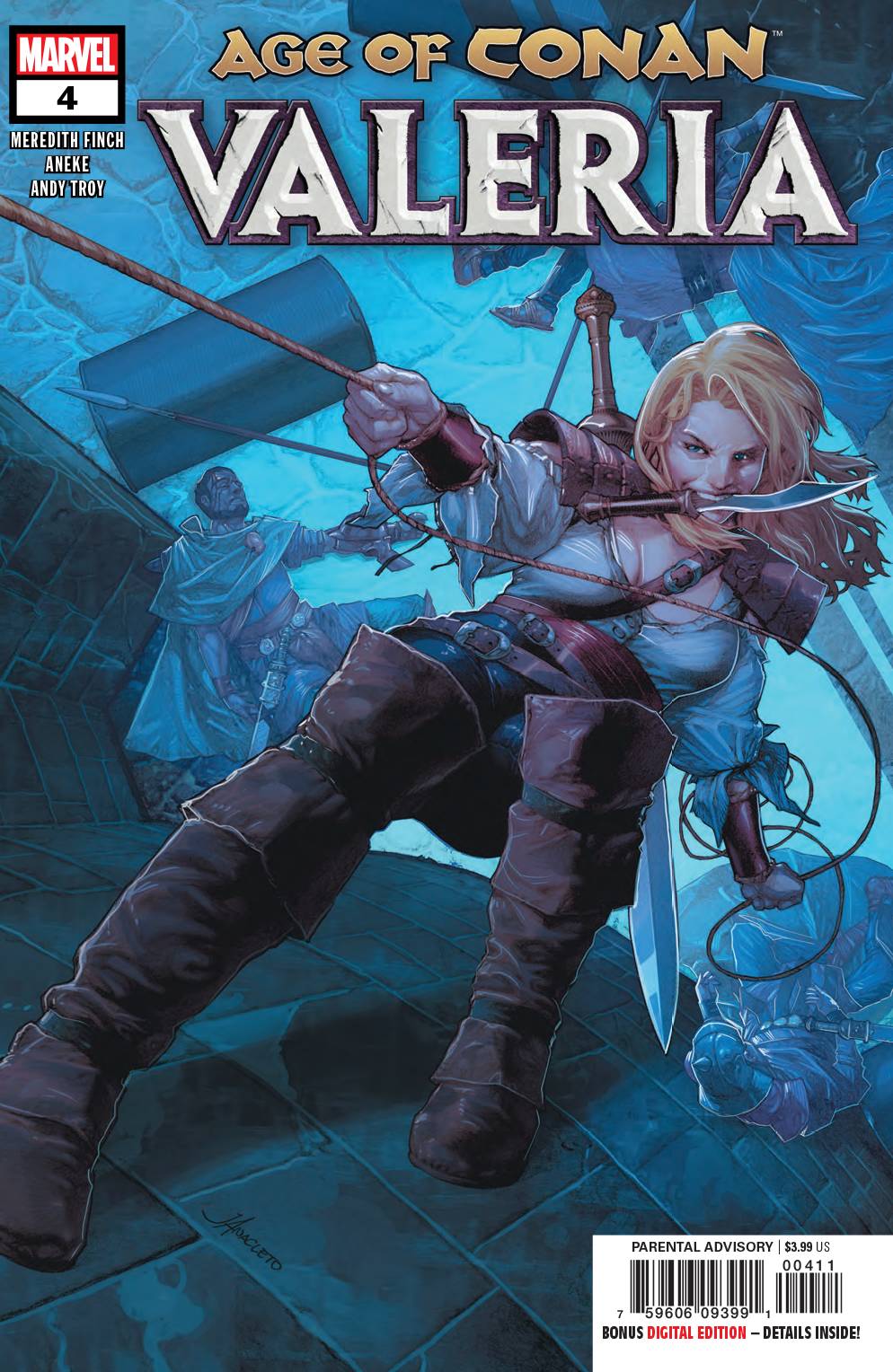
Contributor bio: Jennifer Susannah Devore authors Savannah of Williamsburg, an 18thC. historical-fiction series; she's currently penning BookV in the series. She also authored The Darlings of Orange County, contempo-fiction mise-en-scène in SoCal. Jennifer's obsessed with British mysteries, Northern European paintings and Bob's Burgers. She's intensified her yoga, in case she visits Hyboria.
Follow JennyPop on Insta and Twitter!
Download the entire, 250-pg, 2020 Official Comic-Con Souvenir Book ... for freeeee! (Please note, it is a v large file: 135 MB.)
